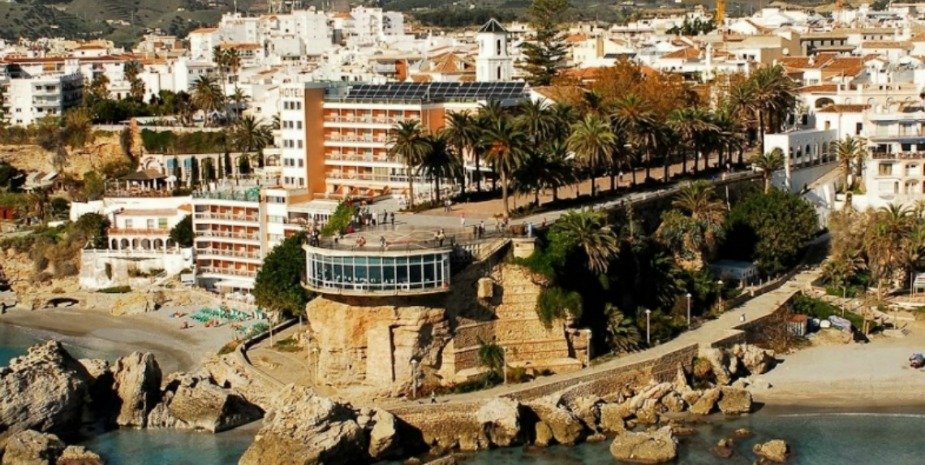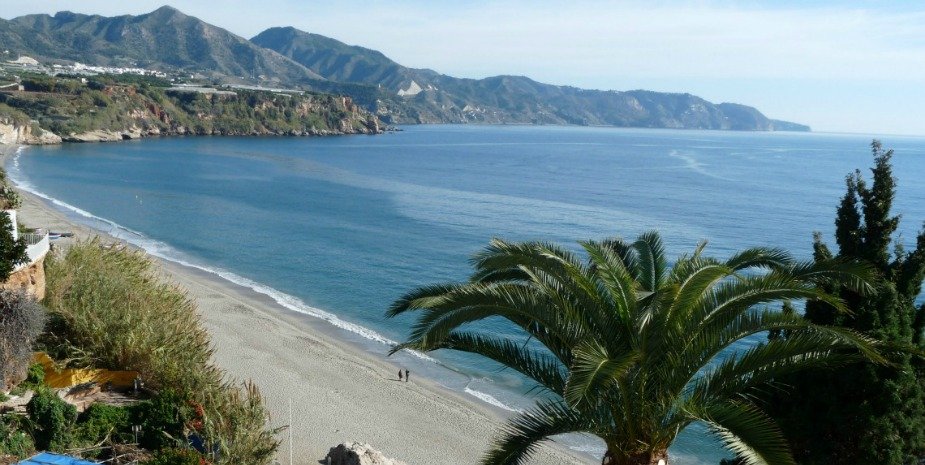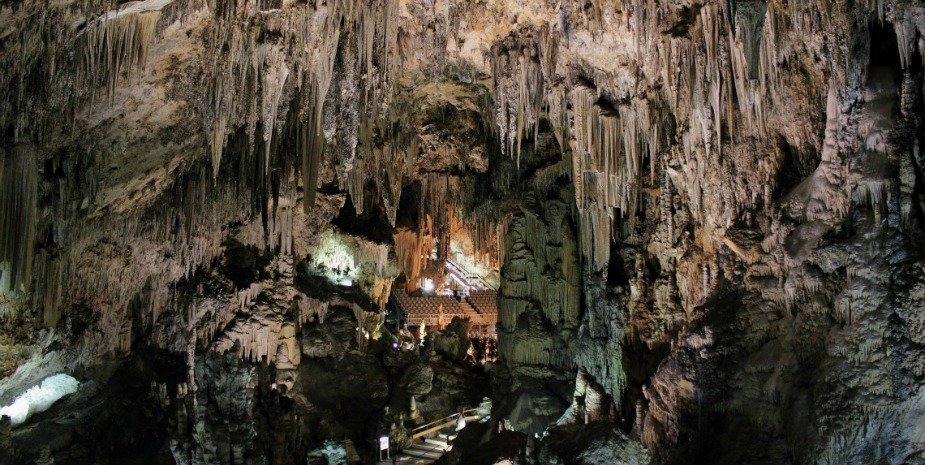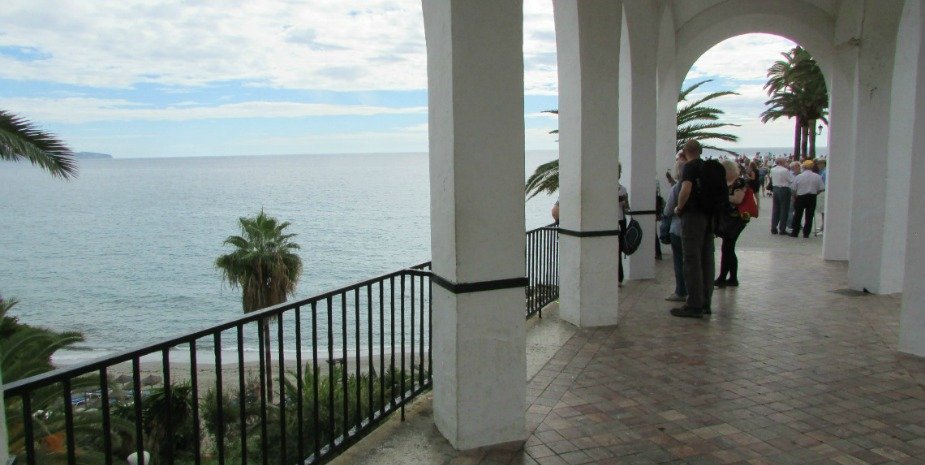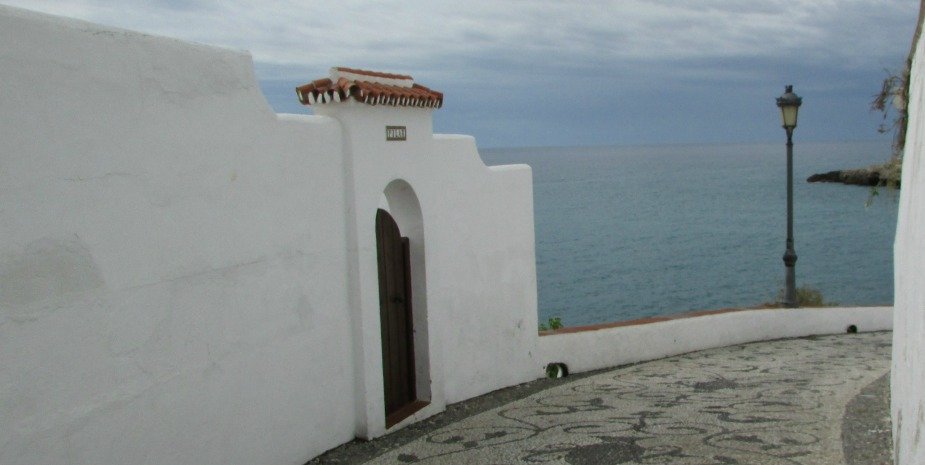Hostal La Ermita Nerja | Destination
Nerja (pronounced: [ˈneɾχa]) is a municipality on the Costa del Sol in the province of Málaga in the autonomous community of Andalusia in southern Spain. It belongs to the comarca of La Axarquía. It is on the country's southern Mediterranean coast, about 50 km east of Málaga.
Under Muslim rule, its name was Narixa, which means "abundant source" and is the origin of the current name.
Nerja has a long history, evidenced by the primitive paintings found in its famous Nerja caves, discovered in 1959. These caves are now believed to be just one entrance to a linked series of potholes stretching many miles into the mountains between Nerja and Granada, and which may yet prove to be one of the most extensive unexplored systems in Europe. Visitors to the caves will be able to view the remains of one of the ancient inhabitants of Nerja.
The Romans built here three settlements, including Detunda, of which now large remains can be seen. The area was later taken over by the Arabs in the early 8th century. Under the Moors, the town was known as Narixa, which means "abundant spring", from which the present name derives.
Monuments & Main sights
- The Caves of Nerja (Spanish: Cueva de Nerja) are a series of caverns close to the town of Nerja in the Province of Málaga, Spain. Stretching for almost 5 kilometres (3.1 mi), the caverns are one of Spain's major tourist attractions. Concerts are regularly held in one of the chambers, which forms a natural amphitheatre.
The caves were re-discovered in modern times on 12 January 1959 by five friends, who entered through a narrow sinkhole known as "La Mina". This forms one of the two natural entrances to the cave system. A third entrance was created in 1960 to allow easy access for tourists. The cave is divided into two main parts known as Nerja I and Nerja II. Nerja I includes the Show Galleries which are open to the public, with relatively easy access via a flight of stairs and concreted pathways to allow tourists to move about in the cavern without difficulty. Nerja II, which is not open to the public, comprises the Upper Gallery discovered in 1960 and the New Gallery discovered in 1969.
In February 2012 it was announced that possibly Neanderthal cave paintings have been discovered in the Caves of Nerja.
- The Balcón de Europa, a mirador or viewpoint which gives stunning views across the sea, is in the centre of the old town. Its name is popularly believed to have been coined by King Alfonso XII, who visited the area in 1885 following a disastrous earthquake and was captivated by the scene. Local folklore says that he stood upon the site where the Balcón now stands, and said "This is the balcony of Europe". Local archive documents are said to show that its name predated this visit, but this has not prevented the authorities from placing a life-sized (and much photographed) statue of the king standing by the railing.
The Balcón area was originally known as La Batería, a reference to the gun battery which existed there in a fortified tower. This emplacement and a similar tower nearby were destroyed during the Peninsular War. In May 1812, the British vessels Hyacinth, Termagant and Basilisk supported Spanish guerrillas on the coast of Granada, against the French. On 20 May, Termagant or Hyacinth opened fire and the forts were destroyed. Two rusty guns positioned at the end of the Balcón are reminders of these violent times. The huge lumps of rock, the remains of La Batería, visible in the sea at the end of the Balcón, are further evidence of this action.
- The Aqueduct, built in the 19th century
- Baroque Hermitage of las Angustias (17th century)
- Church of El Salvador, in Baroque and Mudéjar style (17th century)
Beaches & Ciff of Nerja
Nerja has over 14 km of coastline from west to east, the name of its beaches are the Playazo, Chucho, La Torrecilla, El Salon, La Caletilla, Calahonda, the Chorrillo, Carabeo, Carabeillo and Burriana. The Playazo has an environment that has not yet suffered the consequences of uncontrolled urbanization of Málaga. And Burriana and Torrecilla beaches are accessible to wheelchair users. The name of the Cala cliffs are "Barranco de Maro" the Caleta, cliff Maro, Maro Tower, the Paper Mill, the Alberquillas, Cala del Pino "and Cala El Cañuelo.
(References Wikipedia): https://en.wikipedia.org/wiki/Nerja


